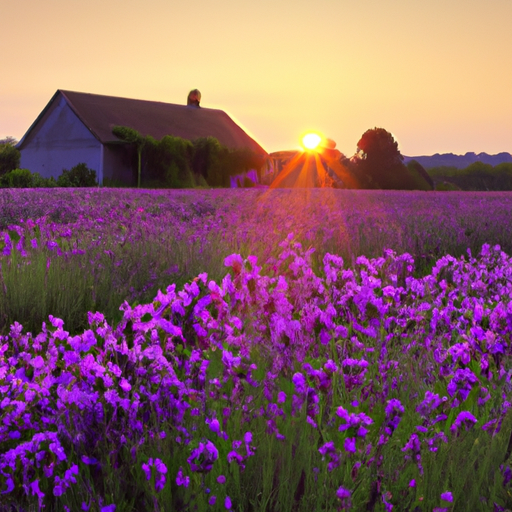Imagine a place where fields of vibrant purple stretch as far as the eye can see, releasing a heavenly scent into the air. That place is the enchanting Cotswold Lavender Farm. Nestled in the picturesque countryside of England, this hidden gem is a haven for lavender-lovers and nature enthusiasts alike. With its breathtaking beauty and tranquil atmosphere, the Cotswold Lavender Farm is truly a sensory delight that will leave you feeling rejuvenated and inspired.
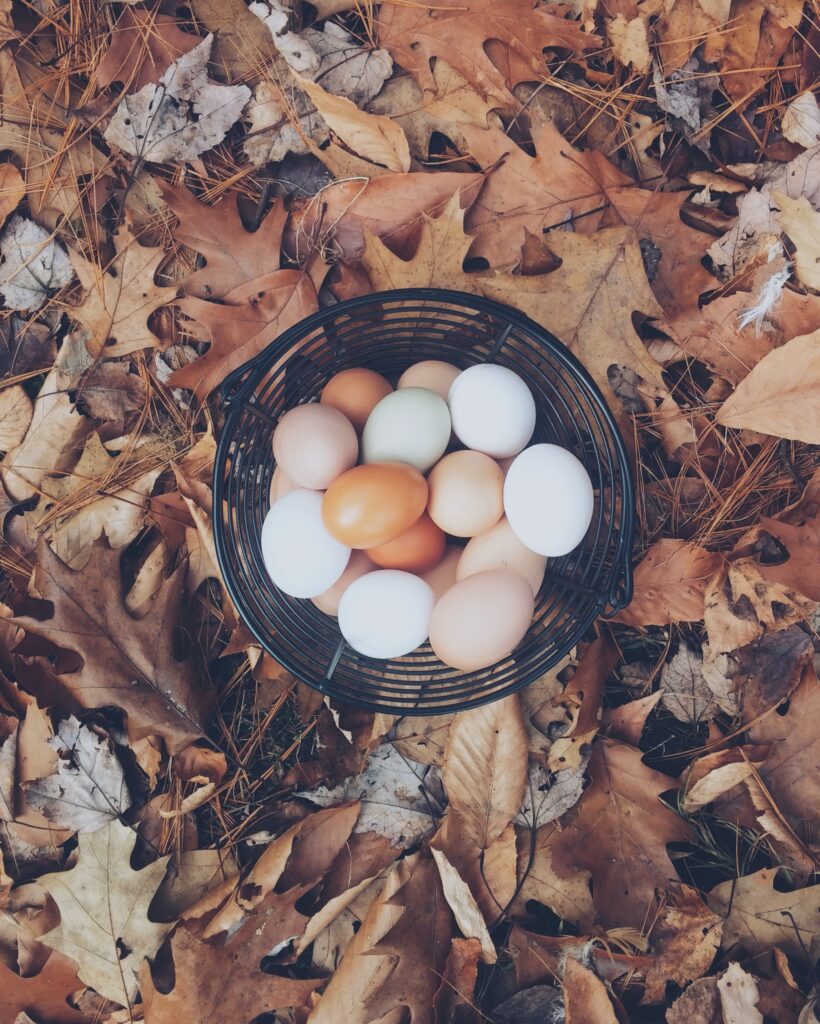
1. Overview
The Cotswold Lavender farm is a picturesque lavender farm located in the heart of the Cotswolds in England. It spans over vast acres of stunning countryside, offering visitors an immersive experience with nature and a chance to explore the beauty and benefits of lavender. With its rich history and dedication to sustainable practices, the farm has become a popular destination for locals and tourists alike.
1.1 Location
Situated in the idyllic Cotswolds region, the Cotswold Lavender farm is nestled between the charming villages of Broadway and Chipping Campden. The area is known for its rolling hills, picturesque landscapes, and quintessential English charm. The farm’s location offers breathtaking views of the surrounding countryside, providing visitors with a true escape into nature.
1.2 History
The history of the Cotswold Lavender farm dates back several decades. The farm was originally established in the 1800s and has been under the ownership of the same family for generations. It was initially a traditional agricultural farm, but in the late 20th century, the owners recognized the potential of growing lavender in the Cotswolds’ unique climate and soil conditions.
1.3 Farm Size
The Cotswold Lavender farm boasts an impressive size, covering more than 90 acres of land. This vast expanse allows for the cultivation of various lavender varieties, creating a stunning spectacle of colorful lavender fields. With such a large area to explore, visitors have ample space to wander and immerse themselves in the fragrant beauty of the lavender farm.
2. Lavender Varieties
Lavender is a diverse plant genus, and the Cotswold Lavender farm cultivates several varieties to provide visitors with a wide range of lavender experiences.
2.1 English Lavender
The farm features the classic English Lavender (Lavandula angustifolia), a popular variety known for its soothing aroma and vibrant purple blossoms. English Lavender is highly valued for its essential oil and is commonly used in aromatherapy and skincare products.
2.2 French Lavender
French Lavender (Lavandula stoechas) is another variety found at the Cotswold Lavender farm. This type of lavender has a distinctly different appearance, with its showy flower heads topped with feathery bracts. French Lavender is often used in decorations, potpourri, and herbal teas.
2.3 Lavandin
Lavandin (Lavandula × intermedia) is a hybrid of English Lavender and Spike Lavender. It combines the best qualities of both varieties, producing larger flower spikes with an intense fragrance. Lavandin is widely used in the production of essential oils and is a popular choice for home gardeners due to its robust growth habit.
3. Lavender Cultivation
Cultivating lavender requires careful attention to planting, irrigation, harvesting, and pruning techniques. The Cotswold Lavender farm employs these essential practices to ensure the health and vitality of its lavender crops.
3.1 Planting
When it comes to planting lavender, selecting the right location and soil conditions is crucial for success. The Cotswold Lavender farm carefully prepares the soil, ensuring it is well-drained and slightly alkaline. Lavender plants thrive in full sun, so the fields are strategically positioned to maximize exposure to sunlight.
3.2 Irrigation
While lavender is known for its ability to tolerate drought, proper irrigation is essential during its early stages of growth. The Cotswold Lavender farm utilizes drip irrigation systems to provide measured amounts of water directly to the plants’ root zones. This efficient irrigation method minimizes water waste and prevents over-watering, which can be detrimental to the plants’ overall health.
3.3 Harvesting
Harvesting lavender is a delicate process that requires careful timing to ensure optimal fragrance and oil content. The Cotswold Lavender farm hand-harvests its lavender when the flower spikes are in full bloom but before the blossoms begin to fade. Harvesting is typically done in the early morning to capture the peak fragrance.
3.4 Pruning
Pruning lavender is important not only for maintaining the plants’ shape and appearance but also for promoting healthy growth and preventing the plant from becoming woody. The Cotswold Lavender farm regularly prunes its lavender plants to encourage bushier growth and more abundant blooms. Pruning is typically done after the flowering season to remove spent flower stalks and maintain the plants’ overall vitality.
4. Attractions and Facilities
In addition to its awe-inspiring lavender fields, the Cotswold Lavender farm offers a range of attractions and facilities for visitors to enjoy.
4.1 Fields of Lavender
One of the main highlights of the Cotswold Lavender farm is its expansive fields of lavender. As you stroll through the fields, you’ll be enveloped in the intoxicating scent of lavender. The vibrant hues of purple create a visual feast for the eyes, providing the perfect backdrop for photos or simply a moment of tranquility in nature.
4.2 Wildflower Meadow
Adjacent to the lavender fields, you’ll find a vibrant wildflower meadow bursting with native plant species. The meadow is a haven for pollinators, attracting butterflies, bees, and other beneficial insects. Take a leisurely walk through the meadow, immersing yourself in the sights and sounds of a biodiverse ecosystem.
4.3 Sensory Garden
For a more intimate lavender experience, the Cotswold Lavender farm offers a sensory garden. Here, you can touch, smell, and admire different varieties of lavender up close. Engage your senses as you run your fingers through the soft foliage, inhale the calming aroma, and appreciate the subtle differences in color and form.
4.4 Distillery
To witness the transformation of lavender into aromatic essential oils, visit the farm’s distillery. Learn about the distillation process and how lavender is carefully harvested, dried, and distilled to extract its precious oils. The distillery provides a behind-the-scenes look at the farm’s essential oil production and showcases the dedication to quality and sustainability.
4.5 Farm Shop
Before you leave, don’t forget to visit the farm shop, where you’ll find a delightful array of lavender-based products. From essential oils and soaps to culinary treats and unique gifts, the shop offers something for everyone. Purchase a piece of the Cotswold Lavender farm to take home and continue enjoying the beauty and benefits of lavender.
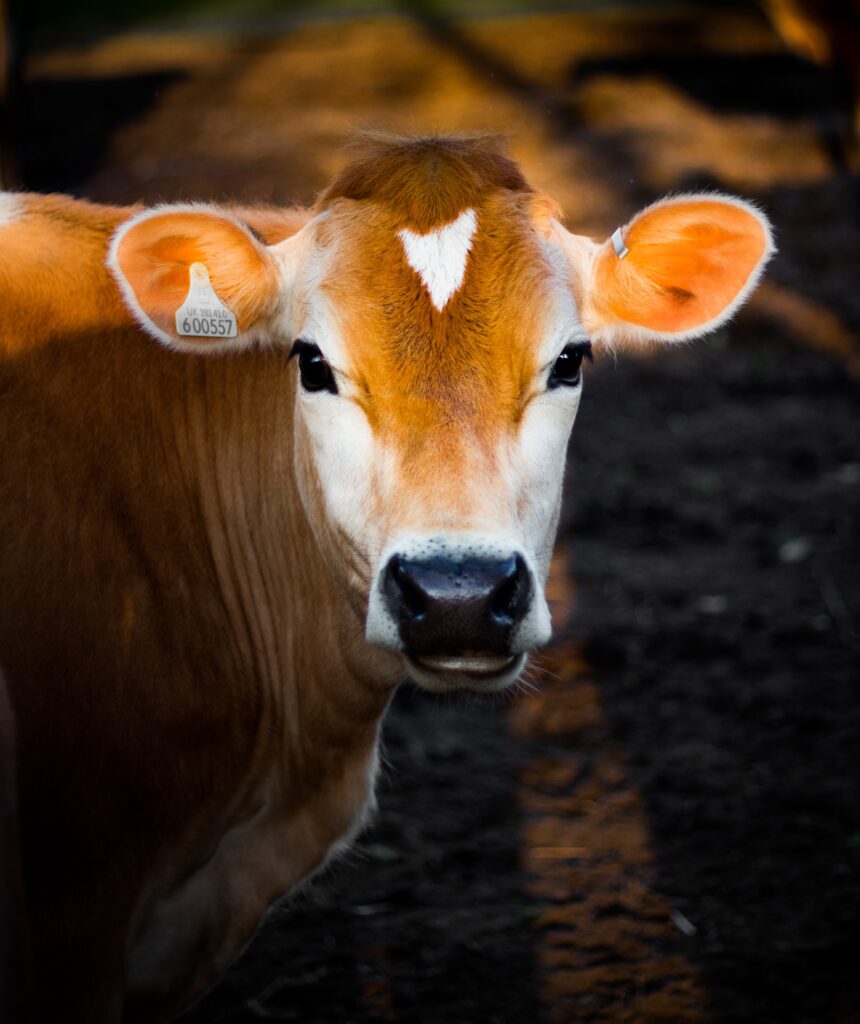
5. Events and Activities
The Cotswold Lavender farm hosts a variety of events and activities throughout the year, providing visitors with opportunities to engage with lavender in different ways.
5.1 Photography Workshops
If you’re interested in capturing the stunning beauty of the lavender fields, join one of the farm’s photography workshops. Led by experienced photographers, these workshops provide valuable tips and techniques for capturing awe-inspiring lavender landscapes. Whether you’re a beginner or an experienced photographer, there’s always something new to learn and discover.
5.2 Lavender Tasting
Expand your culinary horizons by participating in lavender tastings. Discover the versatile flavors and aromas of lavender-infused treats, such as lavender shortbread, lavender cocktails, and lavender-infused honey. Lavender tastings offer a unique sensory experience, allowing you to explore new and exciting ways to incorporate lavender into your culinary endeavors.
5.3 Guided Tours
If you’re looking for a comprehensive experience of the Cotswold Lavender farm, consider joining a guided tour. Knowledgeable guides will lead you through the fields, sharing interesting facts about lavender cultivation, the farm’s history, and the importance of sustainable practices. Guided tours provide a deeper understanding of lavender farming and its impact on the local community and environment.
5.4 Children’s Activities
The Cotswold Lavender farm also caters to younger visitors with a range of children’s activities. From lavender-themed crafting sessions to interactive storytelling, children can engage with lavender in a fun and educational way. These activities foster a love for nature and instill an appreciation for the importance of sustainable farming practices from an early age.
6. Products
The Cotswold Lavender farm is renowned for its high-quality lavender products, carefully crafted from the farm’s own lavender harvest.
6.1 Essential Oils
One of the farm’s signature products is its essential oils. Crafted through a meticulous distillation process, the essential oils capture the aromatic essence of the lavender plants. These oils can be used in aromatherapy, as a calming addition to bath and body products, or as a natural fragrance for the home.
6.2 Soaps and Skincare Products
Harnessing the natural benefits of lavender, the Cotswold Lavender farm creates a range of soaps and skincare products. Lavender’s soothing properties make it an excellent ingredient for gentle and nourishing cleansers, moisturizers, and balms. Pamper your skin with these luxurious lavender-infused products and experience the calming effects firsthand.
6.3 Culinary Products
Lavender is not only cherished for its fragrance but also for its culinary potential. The Cotswold Lavender farm offers a selection of lavender-infused culinary products, including lavender honey, lavender biscuits, and even lavender-infused gin. These delicacies allow you to explore new flavors and add a touch of lavender elegance to your culinary creations.
6.4 Lavender-based Gifts
If you’re searching for a unique gift or souvenir, look no further than the Cotswold Lavender farm’s range of lavender-based gifts. From scented candles and dried lavender bouquets to lavender-themed home decor and accessories, the shop offers a wide variety of options. These gifts are perfect for lavender enthusiasts or anyone who appreciates the natural beauty and calming properties of lavender.
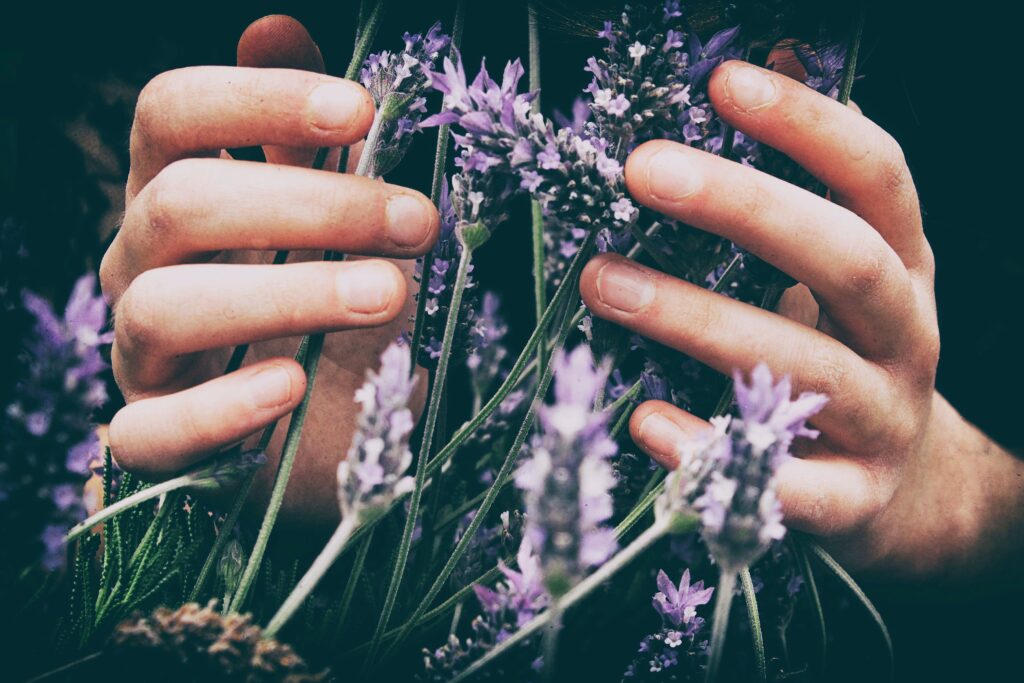
7. Lavender Farming Tips
For those interested in growing lavender themselves, the Cotswold Lavender farm shares valuable tips and insights to help you cultivate thriving lavender plants.
7.1 Soil Requirements
Lavender thrives in well-drained soil with a slight alkaline pH. Before planting lavender, ensure that the soil is loose, rich in organic matter, and free from excessive moisture. If your soil doesn’t meet these criteria naturally, you can amend it with compost or well-rotted manure to improve its drainage and pH balance.
7.2 Sunlight and Temperature
Lavender is a sun-loving plant and requires at least 6-8 hours of direct sunlight daily to flourish. Choose a location in your garden that receives ample sunlight throughout the day. Additionally, lavender prefers moderate temperatures, thriving in climates with warm days and cool nights. Consider the local climate and choose lavender varieties that are well-suited to your region.
7.3 Pruning Techniques
Proper pruning is essential for maintaining the health and shape of lavender plants. Pruning should be done annually, preferably during the early spring or after the flowering season. Remove any dead or diseased branches, and trim back the remaining stems to encourage bushier growth. Avoid cutting the plant too close to the woody base, as this may hinder regrowth.
7.4 Pest and Disease Management
Lavender is generally resistant to pests and diseases, but it’s still important to monitor your plants for any signs of trouble. Common pests that can affect lavender include aphids, spider mites, and root rot. To manage pests, consider using organic insecticidal soaps or neem oil. Proper sanitation, good airflow, and well-drained soil will help prevent disease issues such as fungal infections.
8. Community Involvement
The Cotswold Lavender farm takes pride in its commitment to the local community, offering various opportunities for engagement and involvement.
8.1 Local Employment
The farm contributes to the local economy by providing employment opportunities to residents of the Cotswolds. From lavender cultivation and distillation to shop operations and event management, the farm creates jobs that support the community and its livelihood.
8.2 Volunteering Opportunities
For individuals passionate about lavender and sustainable farming, the Cotswold Lavender farm offers volunteering opportunities. Volunteers can assist with tasks such as planting, harvesting, and maintaining the lavender fields. It’s a chance to connect with nature, learn from experienced farmers, and contribute to the farm’s mission of promoting sustainable agriculture.
8.3 Educational Programs
The Cotswold Lavender farm is dedicated to educating both children and adults about the importance of lavender farming and sustainable practices. The farm offers educational programs for schools and organizations, providing engaging hands-on experiences and informative sessions about lavender cultivation, environmental stewardship, and the local ecosystem.
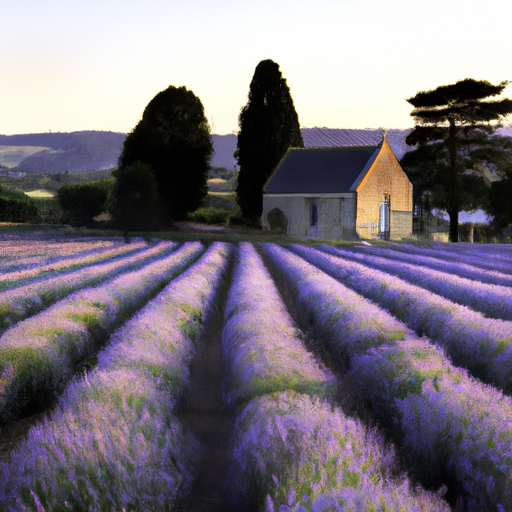
9. Sustainable Practices
Sustainability is at the core of the Cotswold Lavender farm’s operations. The farm employs various practices to minimize its environmental impact and preserve the surrounding biodiversity.
9.1 Organic Farming
The farm embraces organic farming practices, avoiding the use of synthetic fertilizers, pesticides, and herbicides. Instead, natural and organic alternatives are employed to maintain healthy lavender crops while protecting the ecosystem and the farm workers’ well-being.
9.2 Water Conservation
Water conservation is a top priority at the Cotswold Lavender farm. The farm utilizes efficient irrigation systems, such as drip irrigation, to minimize water usage while providing the lavender plants with the necessary moisture. Additionally, rainwater harvesting techniques are employed to reduce reliance on external water sources.
9.3 Biodiversity Preservation
The Cotswold Lavender farm is committed to preserving biodiversity within its grounds. The wildflower meadow provides a habitat for pollinators and other beneficial insects, supporting the local ecosystem and promoting natural pest control. The farm also plants native species and manages its land to enhance biodiversity and protect the delicate balance of the surrounding environment.
10. Visiting Information
If you’re planning a visit to the Cotswold Lavender farm, here’s some important information to help you make the most of your experience.
10.1 Opening Hours
The farm is open to visitors from late spring to early autumn. Opening hours vary depending on the season, so it’s best to check the farm’s website or contact them directly for the most up-to-date information.
10.2 Admission Fees
To support the maintenance and upkeep of the farm, there is an admission fee for visitors. The fees contribute to the farm’s sustainable practices and the preservation of its lavender fields and facilities. Details about admission fees can be found on the farm’s website.
10.3 Accessibility
The Cotswold Lavender farm strives to provide a welcoming experience for all visitors. The farm has accessible pathways and facilities to accommodate individuals with mobility challenges. Wheelchair rentals may also be available upon request.
10.4 Nearby Accommodation
If you’re planning an extended stay, there are various accommodation options available near the Cotswold Lavender farm. From charming bed and breakfasts to luxurious country estates, the Cotswolds offers a range of accommodations to suit different preferences and budgets. Consult travel websites or local tourism offices for recommendations and bookings.
In conclusion, the Cotswold Lavender farm is a captivating destination for lavender enthusiasts, nature lovers, and anyone seeking a tranquil escape into the beauty of the countryside. With its vast lavender fields, diverse attractions, and commitment to sustainability, the farm offers a holistic experience that engages the senses, educates, and fosters a deep appreciation for the natural world. Whether you’re exploring the fields, indulging in lavender-infused treats, or learning about sustainable farming practices, a visit to the Cotswold Lavender farm is sure to leave you feeling inspired and rejuvenated.
